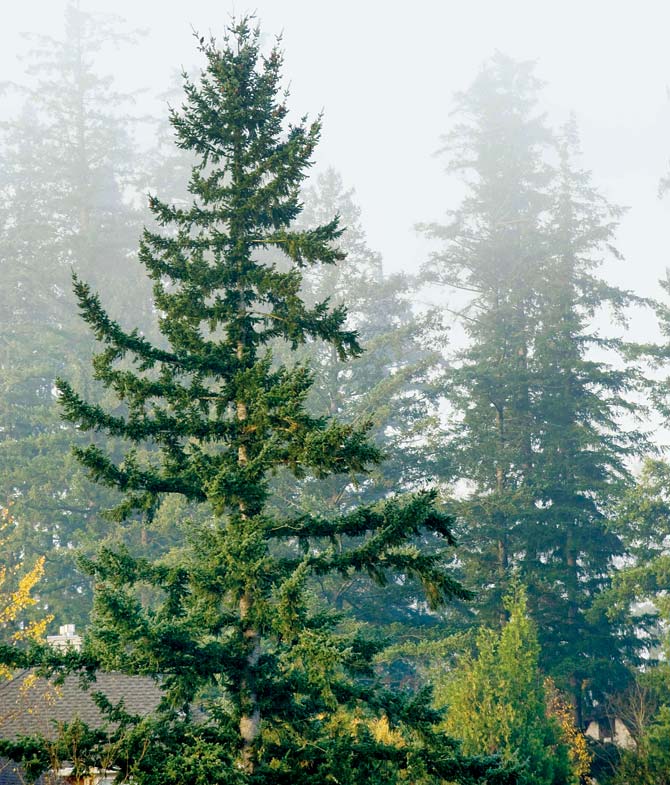There is perceptible excitement in Mumbai with the Christmas season drawing nearer. Irrespective of their faith, Mumbaikars look forward to this penultimate festival, combined with New Year celebrations

 There is perceptible excitement in Mumbai with the Christmas season drawing nearer. Irrespective of their faith, Mumbaikars look forward to this penultimate festival, combined with New Year celebrations. While hoping there will be a nip in the air so they can flaunt their scarves and jackets, everyone is busy making year-end plans.
There is perceptible excitement in Mumbai with the Christmas season drawing nearer. Irrespective of their faith, Mumbaikars look forward to this penultimate festival, combined with New Year celebrations. While hoping there will be a nip in the air so they can flaunt their scarves and jackets, everyone is busy making year-end plans.
The urban wildlife is not oblivious of this flurry of activities. Many trees lining malls, restaurants and pubs get covered with bright blue, white, yellow and red lights. These lights take away noctural inhabitants like owls, bats, squirrels and roosting birds, besides distracting drivers on the road. The changed lighting may also affect ant colonies, spiders, honeybee combs, praying mantids, snails, geckos, tree frogs, crows, egrets, snakes, civets, mongoose and even humans living in the vicinity.
ADVERTISEMENT

This format of decoration and lighting is common practise from Ganapati, Diwali, Eid, shopping festivals to anniversaries of political leaders. However in our excitement to celebrate, party, decorate and declare our joy, or simply advertise our wares, we disregard a basic courtesy of being a good ecological neighbour.
I do agree that a Christmas or Yule tree is a must for celebrations as it imparts a festive look to the place. But which is the Christmas tree?
To understand which trees qualify for the position, we must trace the ritual back to the era and place of origin, i.e. 15-16th Century or early modern Germany. Devout Christians put up these trees in their homes and decorated them with edible nuts and fruits. Through generations, illuminating these trees became fashionable and candles were used along with tassels and glittery objects. With the advent of electricity, light bulbs, LED strips, tubes and lanterns are used. There is, however, no clear global consensus on which tree qualifies as the Yule tree.
Since the tradition originated in the temperate Northern Hemisphere, local evergreen conifers such as pine, spruce and fir were preferred. But as the concept grew popular and spread across the world, including the tropics and the Southern Hemisphere, similar-looking conifers got added to the list of Christmas trees, viz. cedar (deodar), larch, cypress, juniper, yews, Sequoias and Araucarias. The requirements included needle-like leaves (conifers) to prevent loss of moisture from snow, naked fruits in the form of cones (gymnosperms) and evergreens. Our British rulers planted varieties of conifers suited to the local climates across the country.
Mumbai’s coastal weather and low altitude wasn’t conducive to grow conifers, but the most primitive of the lot, 290-million-year-old araucarias, seems to be at home in Mumbai.
Thanks to its zigzag and dense branching, it earned the name of monkey-puzzle tree. Without much choice, they have became Mumbai’s Yule trees. They may not be a local species, but definitely bring charm and cheer to the locale they are grown in. Most gardens give them the central place of pride.
So, if you have an araucaria tree, remember that while decorating your yule tree, use ecologically non-disturbing materials such as coloured or shining papers, used bottles, ping-pong balls or anything that can be
recycled or re-used. So that the yule tide brings in cheer and happiness for all creatures that surround your Christmas tree.
Write in to Anand Pendharkar at sproutsonline@gmail.com
 Subscribe today by clicking the link and stay updated with the latest news!" Click here!
Subscribe today by clicking the link and stay updated with the latest news!" Click here!







